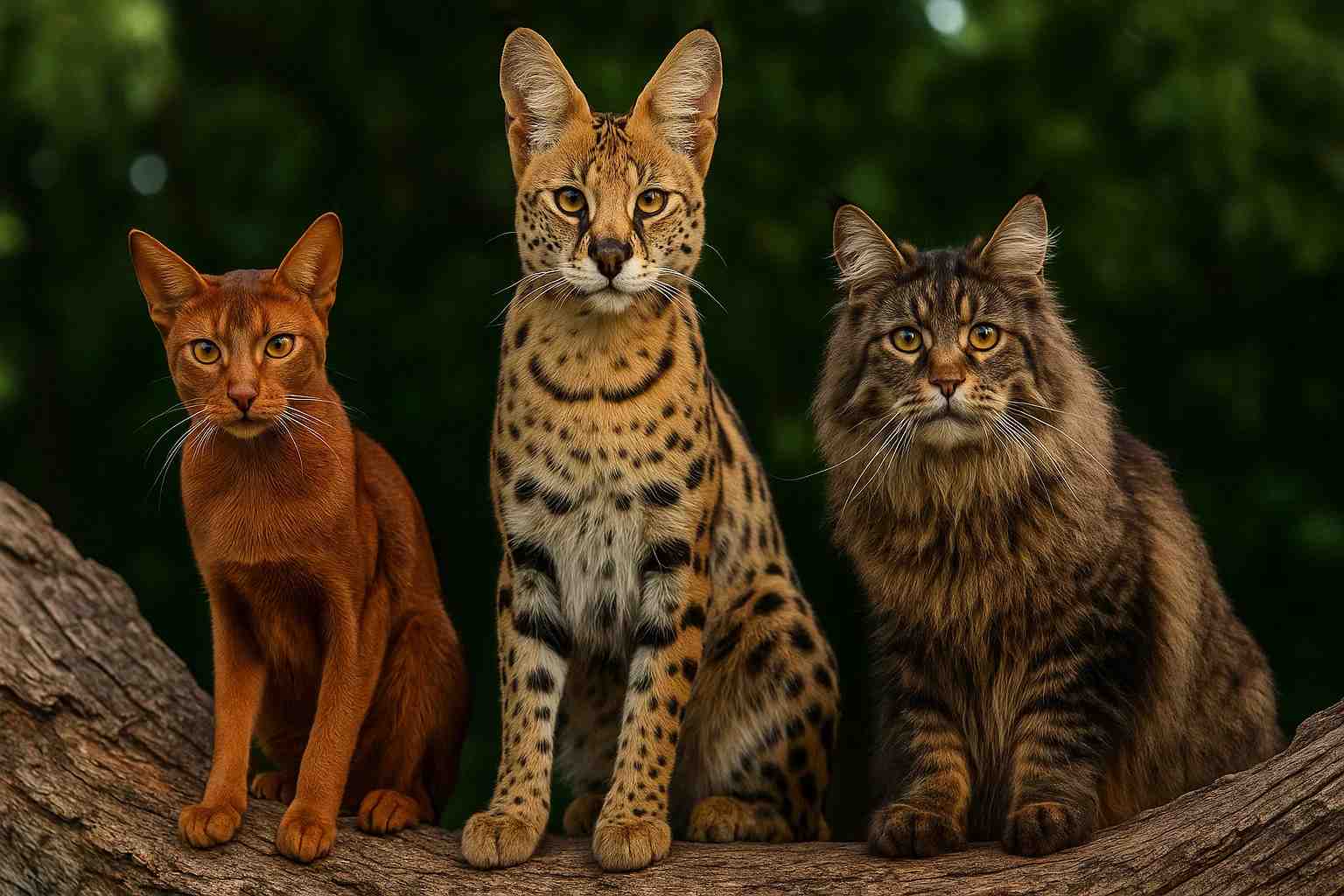While domestic cats have shared our homes for thousands of years, some breeds are far from your typical cuddly lap companions. These fascinating felines carry traits from their wild ancestors—whether in their size, temperament, or instincts—that make them challenging to keep as pets. Yet, they continue to intrigue cat enthusiasts worldwide with their exotic appearances and untamed personalities. Many of these are often referred to as wild domestic cats or wild house cat breeds.
1. Savannah Cat
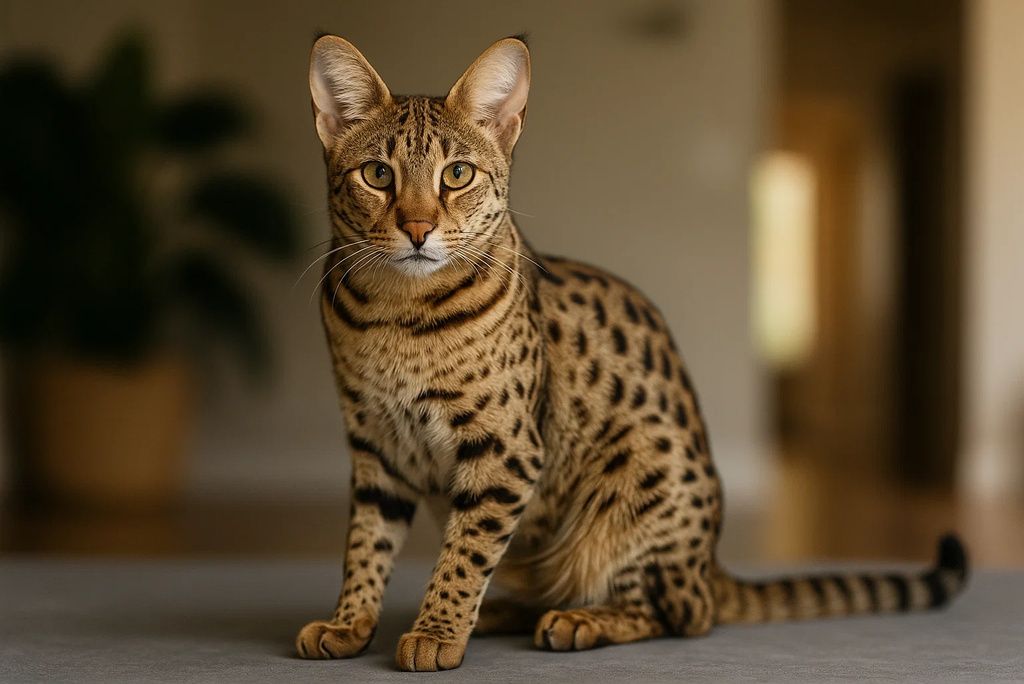
A cross between a domestic cat and a serval, the Savannah cat is known for its striking spotted coat and long legs. These cats can weigh up to 25 pounds and leap over eight feet high, requiring plenty of space to roam. They are highly intelligent, often compared to dogs for their ability to learn tricks and walk on leashes. However, their strong predatory instincts and high energy make them unsuitable for most households. Ownership of Savannah cats is also regulated in some states due to their wild lineage. (ASPCA)
2. Bengal Cat
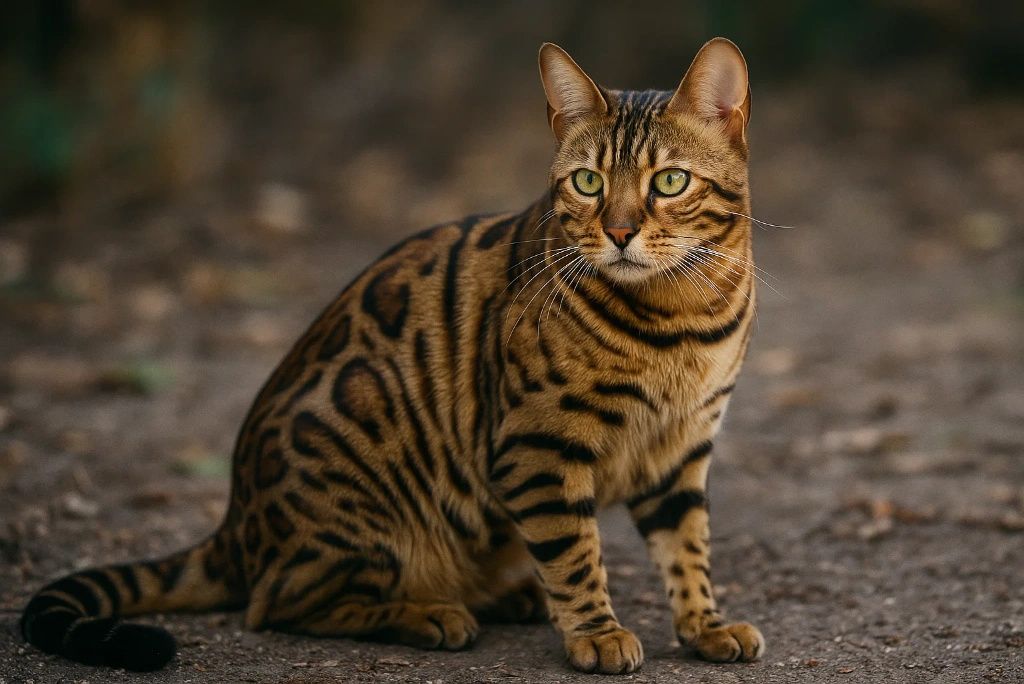
Bengal cats are beloved for their leopard-like markings and boundless energy. Bred from domestic cats and the Asian leopard cat, they combine beauty with athleticism. Bengals love climbing, swimming, and interactive play, often outsmarting puzzle toys meant for dogs. Their wild ancestry gives them a strong prey drive, which can be challenging for homes with small pets. They need constant enrichment and can become destructive if bored. (The International Cat Association)
3. Chausie
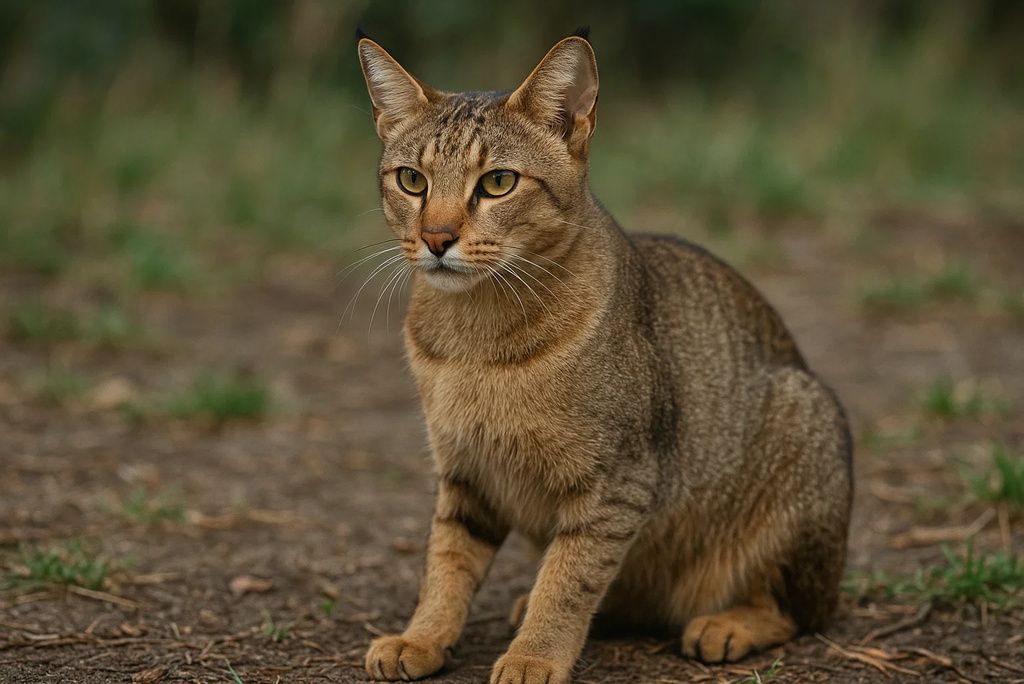
Descended from the jungle cat (Felis chaus), the Chausie is sleek, muscular, and highly active. These cats are natural athletes and require lots of mental and physical stimulation. They often bond closely with their owners but can become stressed in confined or unstimulating environments. Chausies are best suited for people who can dedicate significant time to play and enrichment. This domestic jungle cat is one of the most athletic wild house cats kept as companions.
4. Serengeti Cat
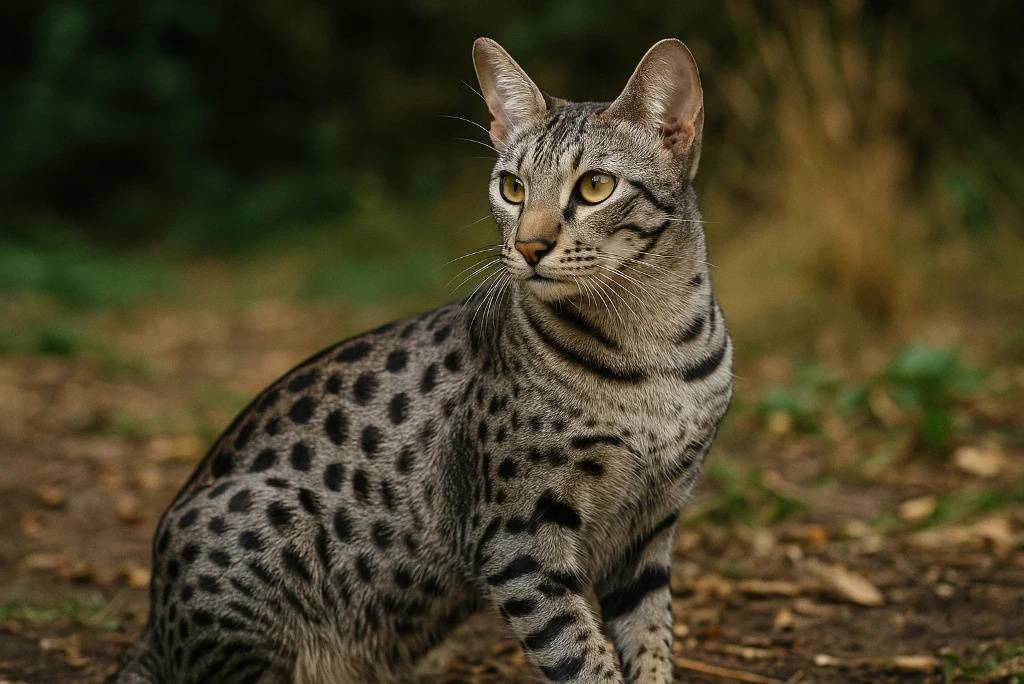
Developed to resemble a wild serval, the Serengeti cat has long legs, a lean frame, and large ears. Though fully domestic, they retain a “wild cat” look and an adventurous spirit. Serengetis are extremely vocal and energetic, often demanding attention and stimulation. Without proper outlets, they may resort to destructive behavior. These cats thrive in homes with climbing spaces and interactive toys. (PetMD)
5. Cheetoh Cat
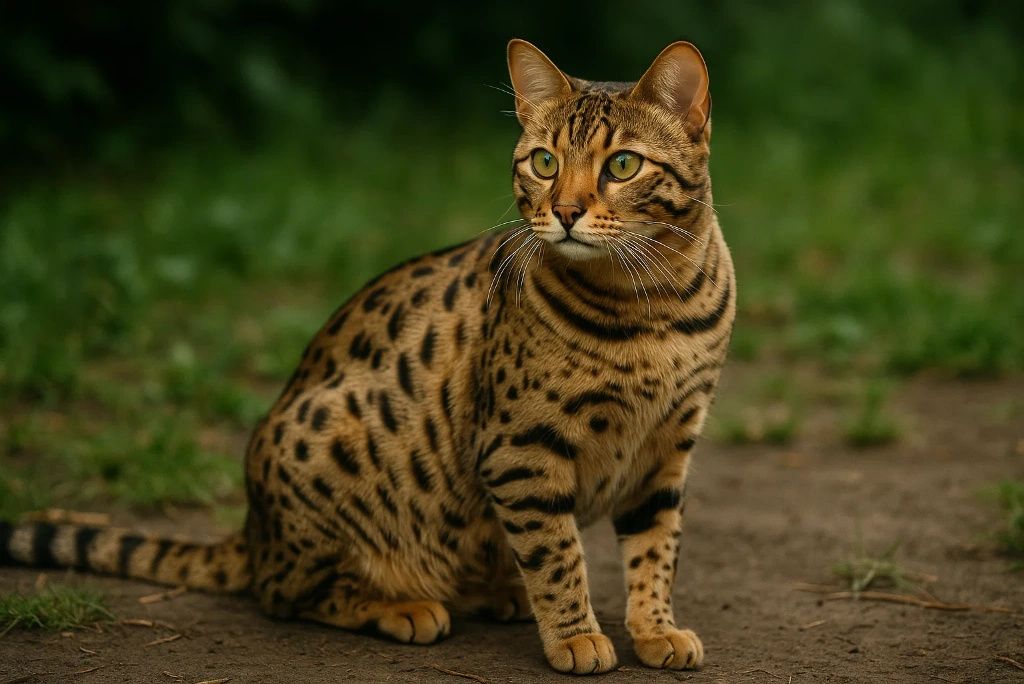
A hybrid of Bengals and Ocicats, the Cheetoh cat is bred for its wild appearance and social nature. They often weigh between 15 and 25 pounds and are highly active. Cheetohs are more people-oriented than some other wild looking domestic cats, but their energy levels can overwhelm inexperienced owners. They need frequent play sessions, vertical spaces, and puzzle toys to keep them mentally engaged. (PetMD)
6. Pixie-Bob
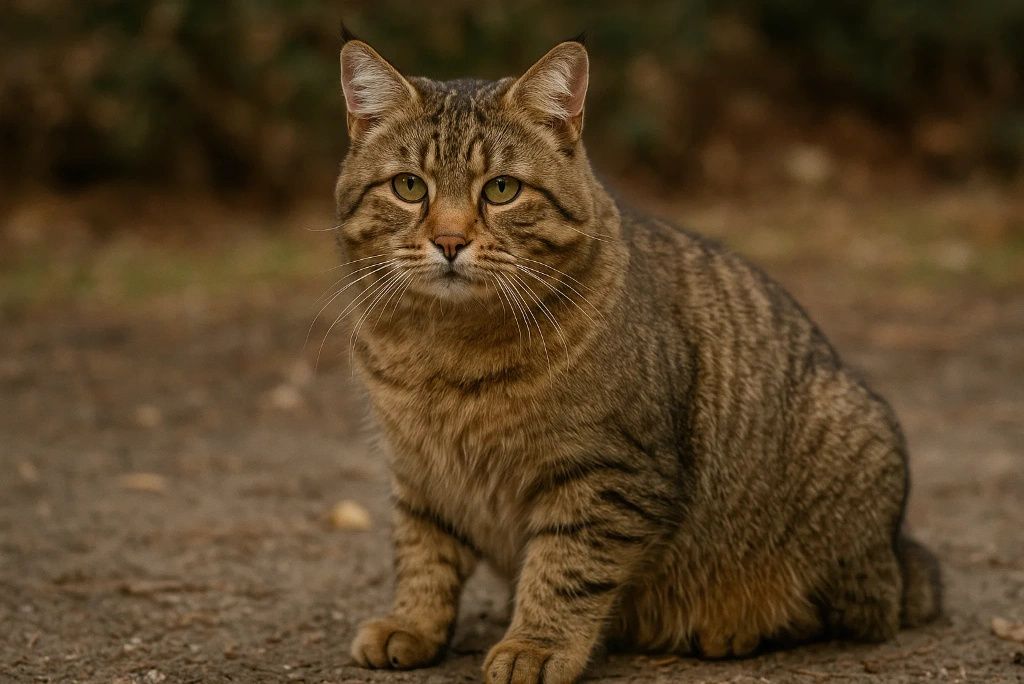
Resembling a small bobcat, the Pixie-Bob has a rugged appearance with tufted ears and a bobbed tail. While their temperament is typically more docile than that of other wild domestic cat breeds, they still retain an adventurous and independent streak. Pixie-Bobs can grow up to 18 pounds and are often described as dog-like for their loyalty and willingness to play fetch. However, their size and strength mean they need sturdy scratching posts and climbing structures. (Cat Fanciers’ Association)
7. Ocicat
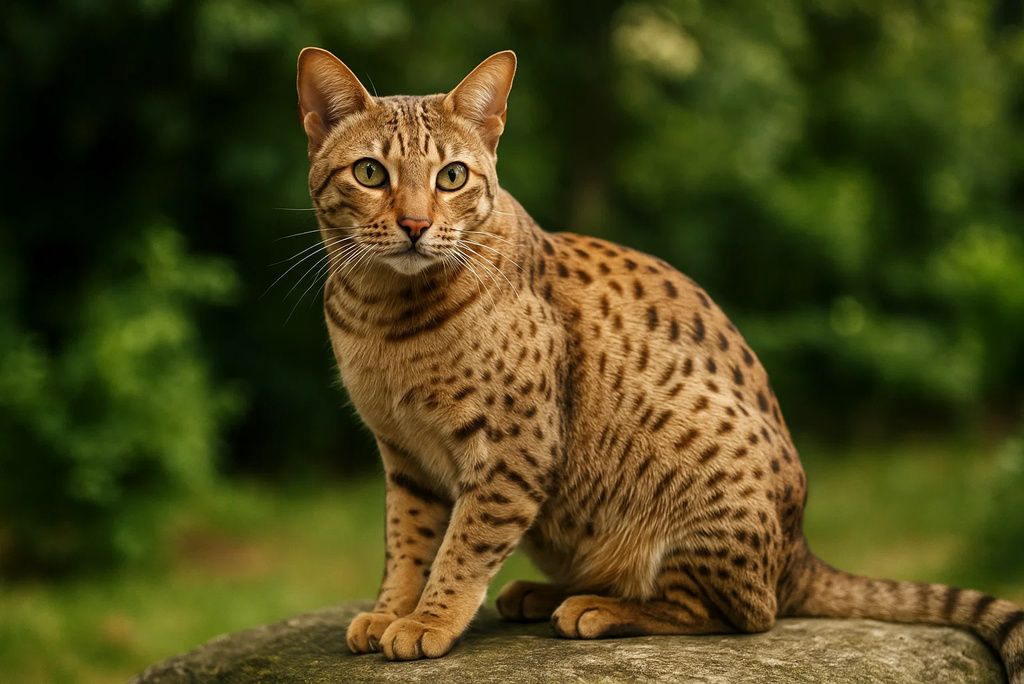
Despite its name, the Ocicat has no wild DNA—it’s a domestic breed created to resemble an ocelot. These cats are intelligent, playful, and require significant interaction. While they lack the unpredictability of hybrid breeds, their athleticism and social demands make them better suited for active households. They do well with other pets and children if properly socialized. Some enthusiasts consider them domestic cats that look wild. (The International Cat Association)
8. Caracat
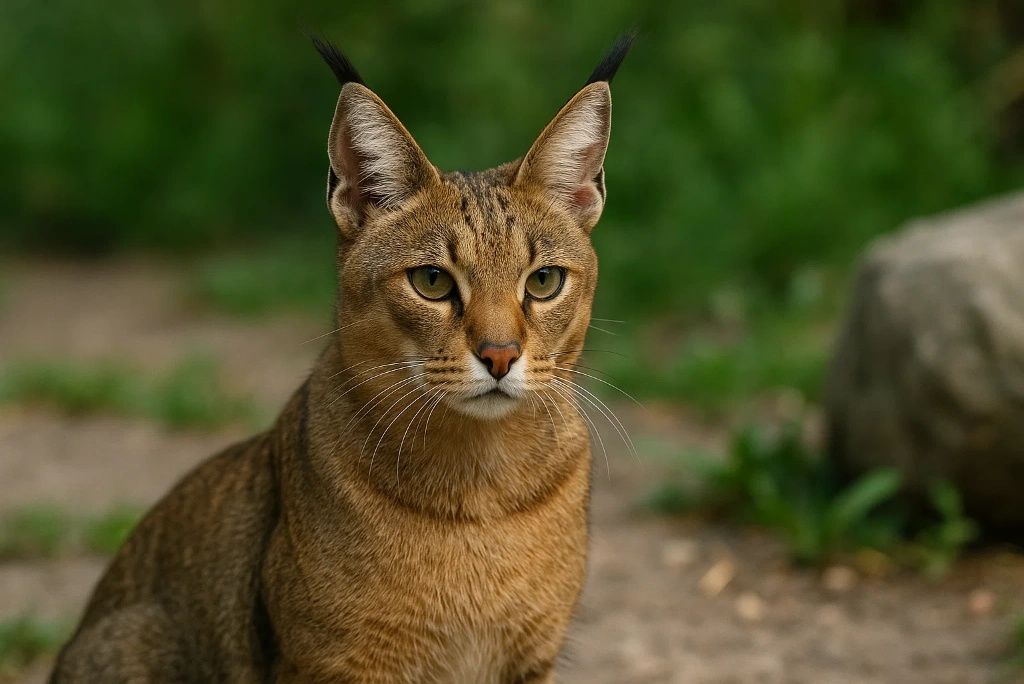
One of the rarest hybrid cat breeds, Caracats are a cross between domesticated wild cats and caracals (African lynx). They are large, powerful, and require a highly experienced owner to manage their wild instincts. Caracals often retain strong hunting drives and can be unpredictable, which is why many regions regulate or ban their ownership. They are best kept in environments that mimic their natural habitat. (National Geographic)
9. Toyger
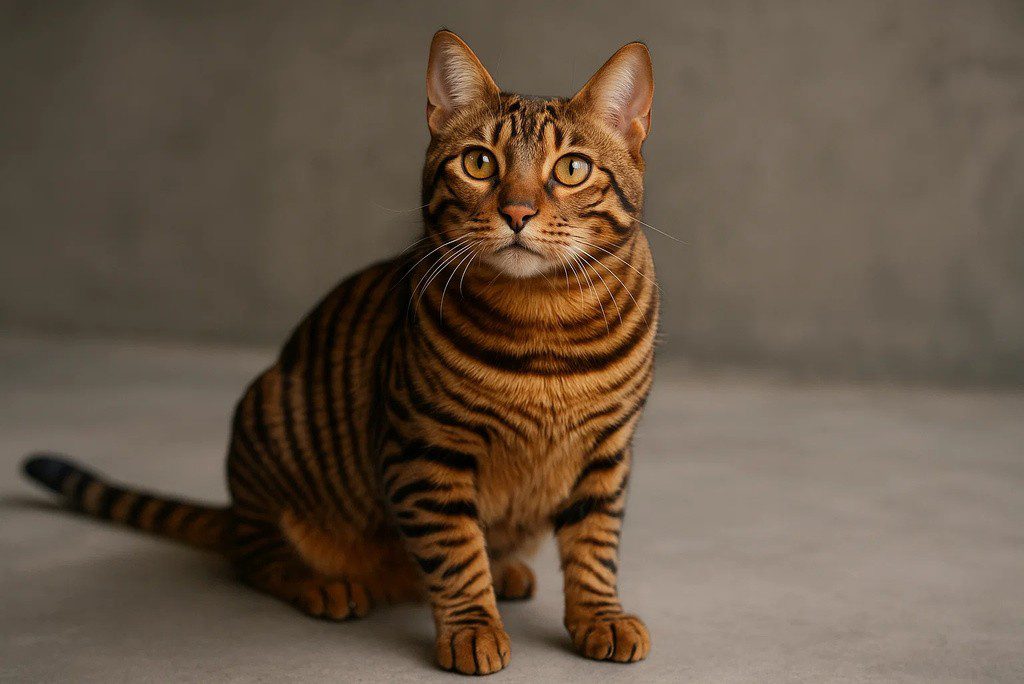
The Toyger was bred to resemble a miniature tiger, with bold, dark stripes on a golden coat. Despite their domestic wild cat lineage, Toygers retain a high level of energy and need plenty of enrichment. They are playful and social and enjoy interactive games, but they also require ample climbing opportunities and mental stimulation to prevent behavioral issues.
These cats adapt well to busy households but demand regular engagement to stay happy. Breeders continue refining the Toyger to enhance its tiger-like appearance and maintain its sociable temperament. (PetMD)
10. Geoffroy’s Cat Hybrid
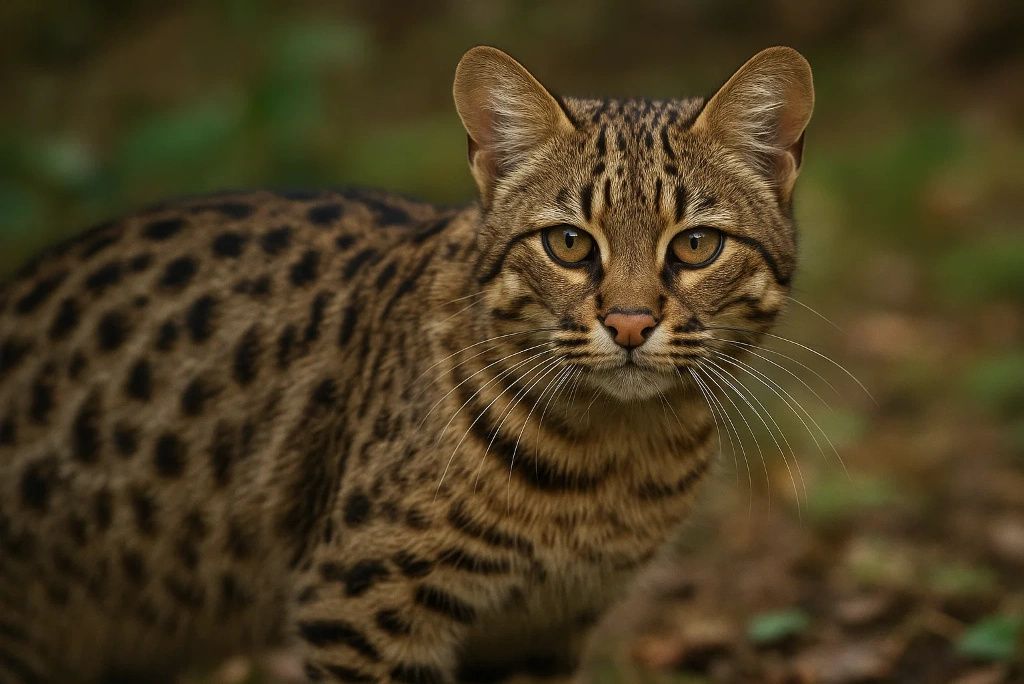
Hybrids of domestic cats and Geoffroy’s cats (a wild South American species) are exceptionally rare and challenging to keep. These cats are nocturnal, highly territorial, and retain many wild traits, making them unsuitable for typical home environments. Specialized care and secure outdoor enclosures are often necessary to meet their needs. They require constant environmental stimulation to prevent stress and aggression. Due to their unpredictable nature, only experienced handlers should consider owning these hybrids. (National Geographic)
11. Jungle Curl
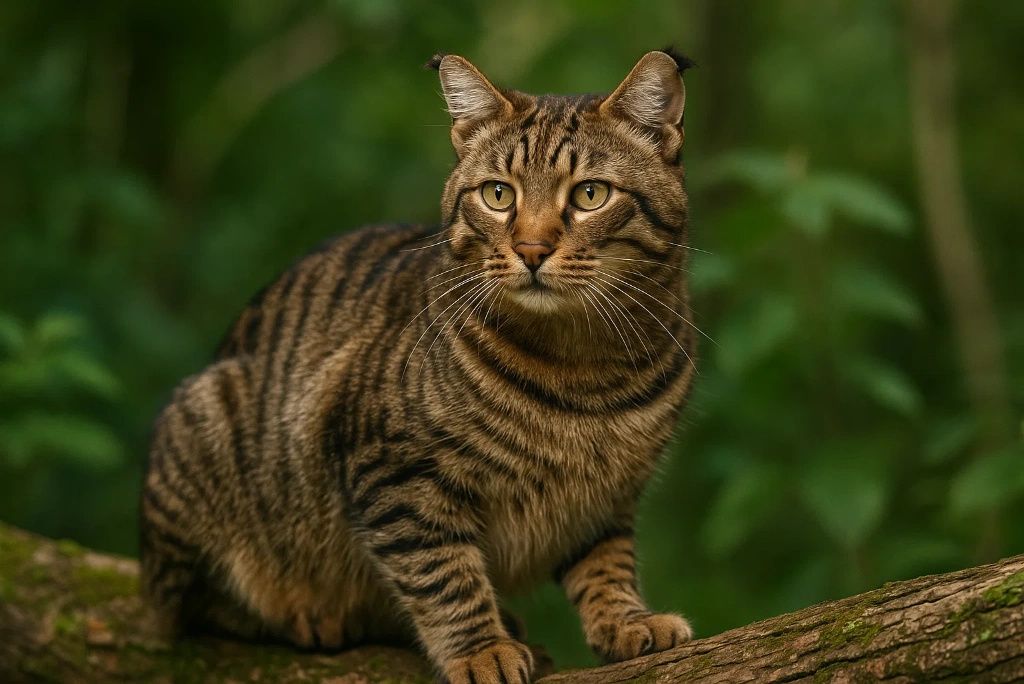
A cross between a jungle cat and a domestic breed with curled ears, the Jungle Curl stands out for its unique look and spirited personality. These cats are energetic, curious, and require substantial mental stimulation. Their wild ancestry makes them less predictable than typical house cats, often requiring secure spaces and an experienced handler. Jungle Curls are best suited for large homes with climbing areas. Proper socialization from a young age is essential for their adaptability. (Cat Fanciers’ Association)
12. Kanaani Cat
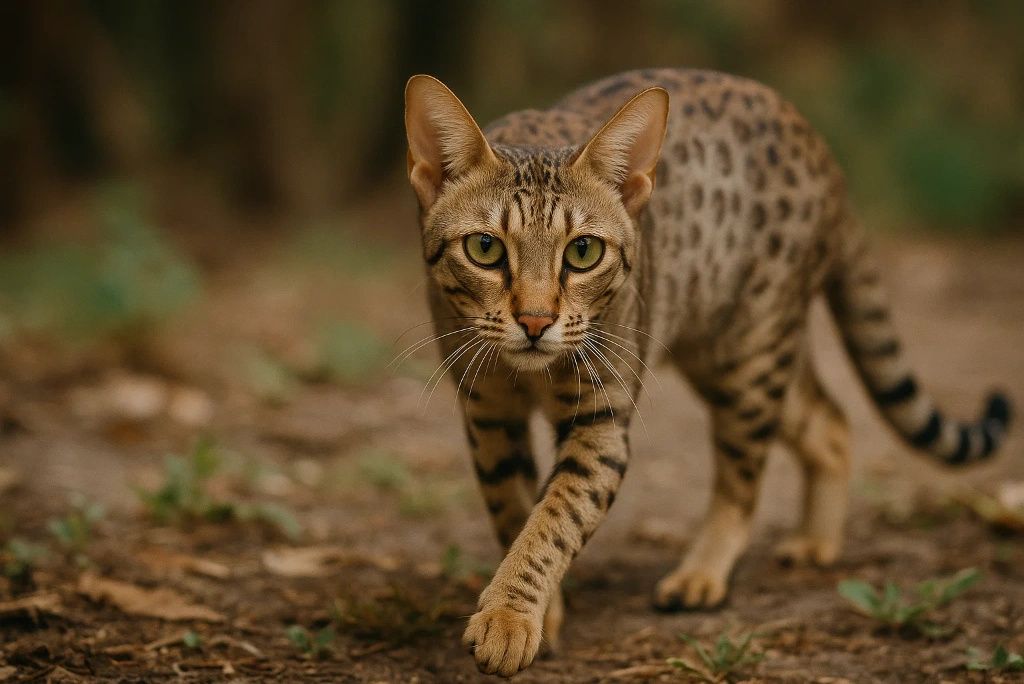
Originating in Israel, the Kanaani cat is a hybrid between wild cats and domestic breeds. These cats are medium to large in size and known for their spotted coats and high intelligence. They require a secure and stimulating environment, as their wild instincts make them prone to escape attempts and hunting behaviors. Kanaani cats often form strong bonds with their owners but can be aloof with strangers. Their agility and climbing ability mean they thrive in multi-level living spaces. (PetMD)
13. Safari Cat
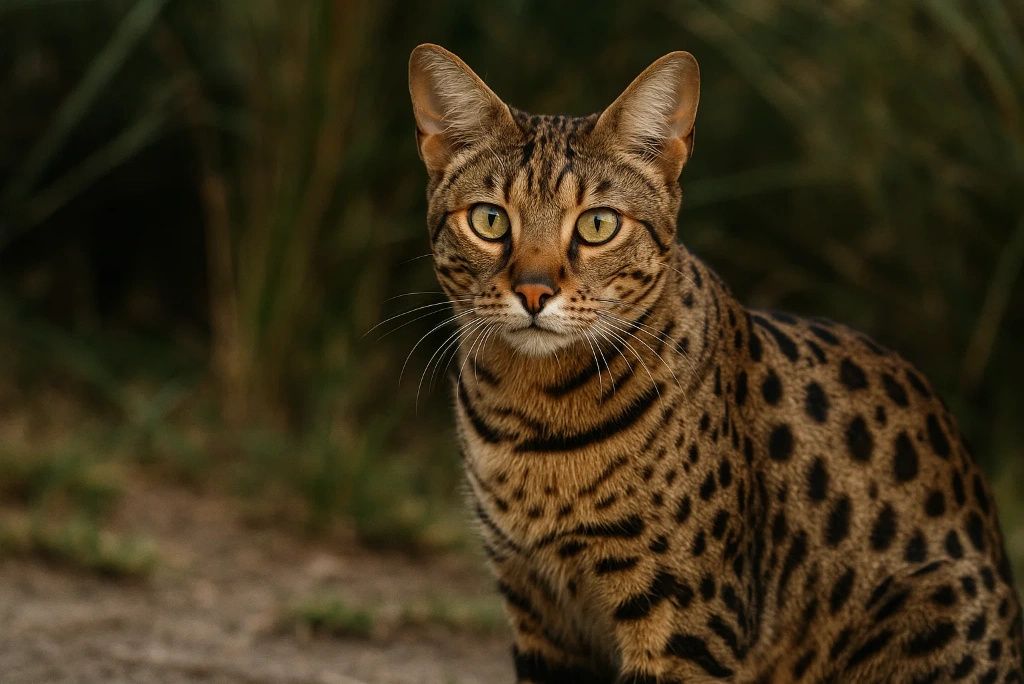
A hybrid between a domestic cat and the Geoffroy’s cat, Safari cats are one of the largest hybrid breeds, sometimes weighing over 25 pounds. They are extremely intelligent and active and require constant mental stimulation. Their wild instincts make them unpredictable and challenging to keep in standard homes, often requiring large enclosures and specialized care. Safari cats are rare and typically bred for enthusiasts with a hybrid experience. They can live over 20 years when provided with proper care and space. (National Geographic)
14. Marguerite Cat (Sand Cat Hybrid)
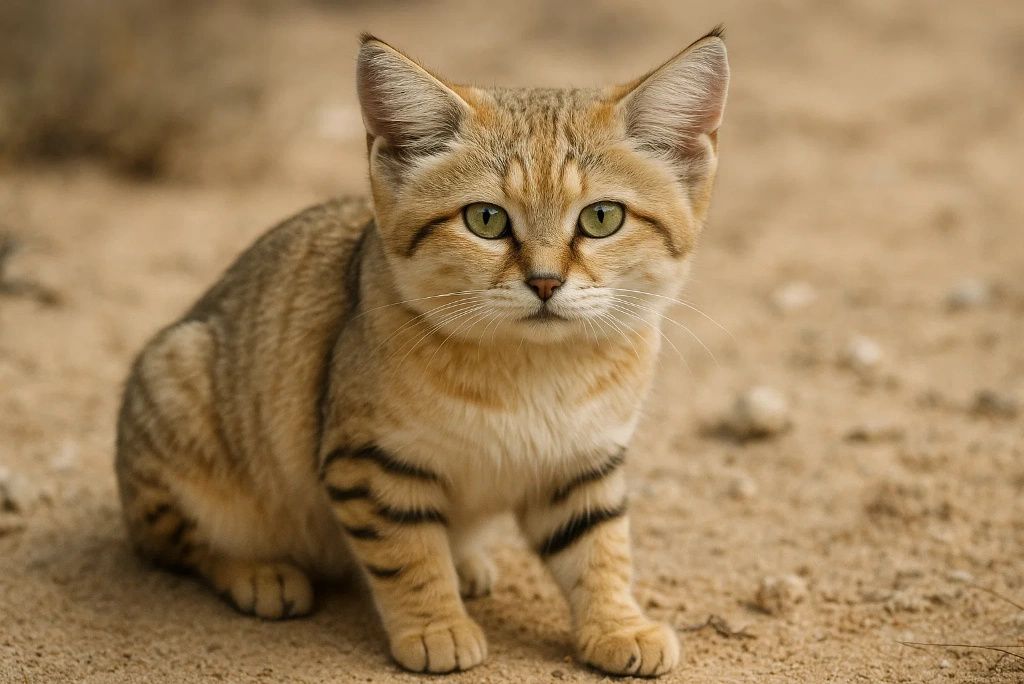
Hybrids of domestic cats and sand cats are exceedingly rare and difficult to care for. These cats retain the sand cat’s shy, nocturnal tendencies and strong hunting instincts. They require a quiet environment and are often more fearful than other hybrids, making them a poor choice for households with children or other pets. Their sensitive nature makes acclimating to domestic life particularly challenging. Breeding programs for these hybrids are limited due to their demanding care needs. (National Geographic)
15. Abyssinian
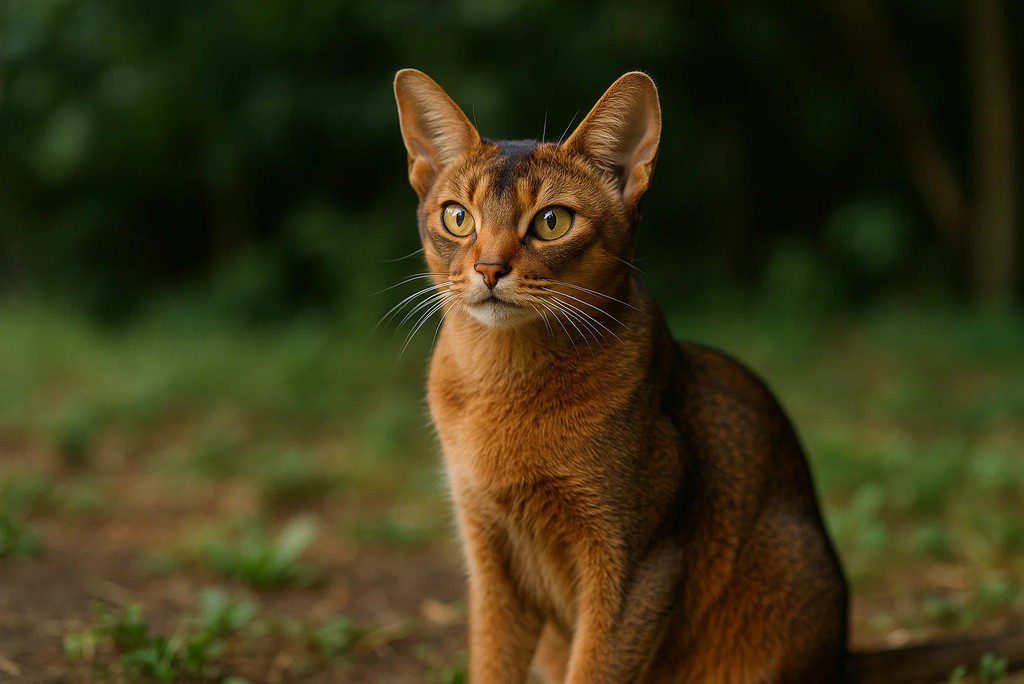
While fully domestic, Abyssinians are believed to be one of the closest breeds to ancient wild cats in temperament. They are highly energetic, curious, and thrive on interactive play. Abyssinians love to climb and explore, often getting into mischief if left unsupervised. They require plenty of vertical space and mental stimulation to stay content. Their strong social nature makes them excellent companions for other pets. Daily play sessions are necessary to manage their endless curiosity. (Cat Fanciers’ Association)
16. Egyptian Mau
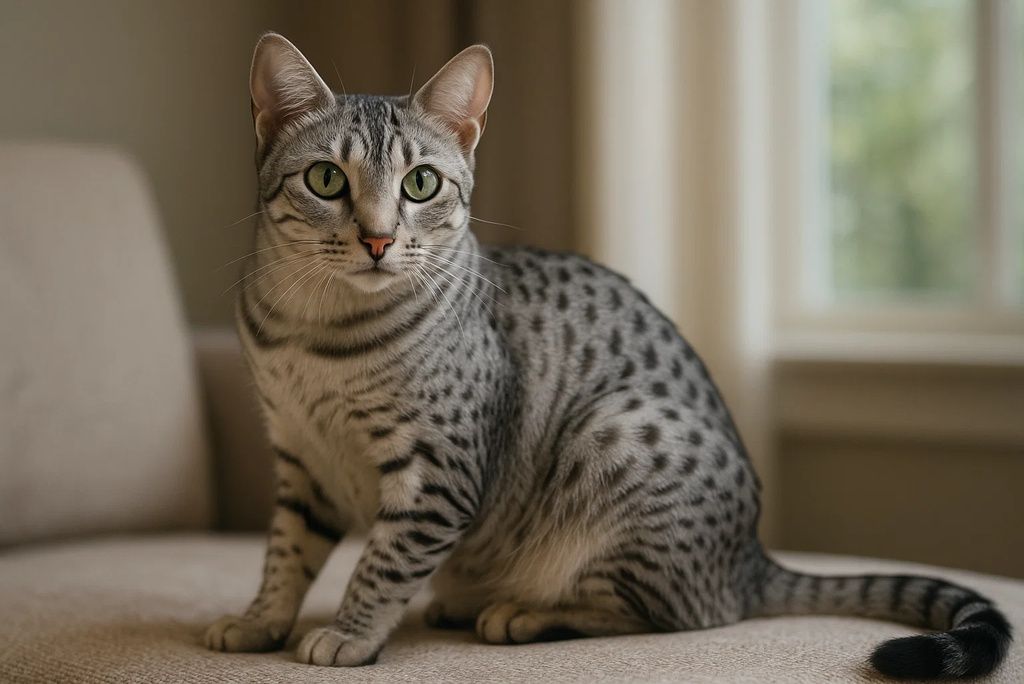
Known for its naturally spotted coat, the Egyptian Mau is one of the fastest domestic cats, capable of reaching speeds up to 30 mph. Their athletic build and strong hunting instincts make them energetic companions that need a stimulating environment. While affectionate with their family, they can be shy around strangers and require secure, enriched spaces to thrive. Egyptian Maus excel in interactive games and agility exercises. They do best in homes with safe outdoor enclosures for exploration. (PetMD)
17. Kurilian Bobtail
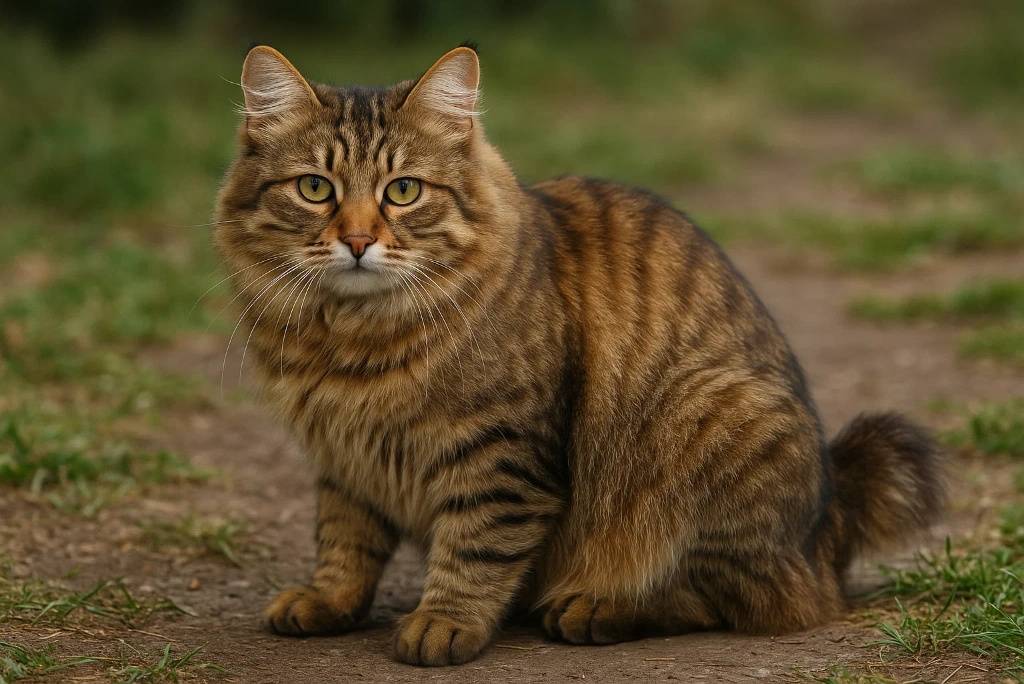
Originating from Russia’s Kuril Islands, the Kurilian Bobtail is a rugged, semi-wild breed known for its strong hunting instincts and love of water. They often bond deeply with their owners but retain a strong independent streak. These cats are excellent climbers and jumpers, requiring ample vertical territory and engaging activities to prevent boredom. Their weather-resistant coat makes them well-suited to colder climates. Kurilian Bobtails are also known for forming tight-knit family groups when kept with other cats. (Cat Fanciers’ Association)

